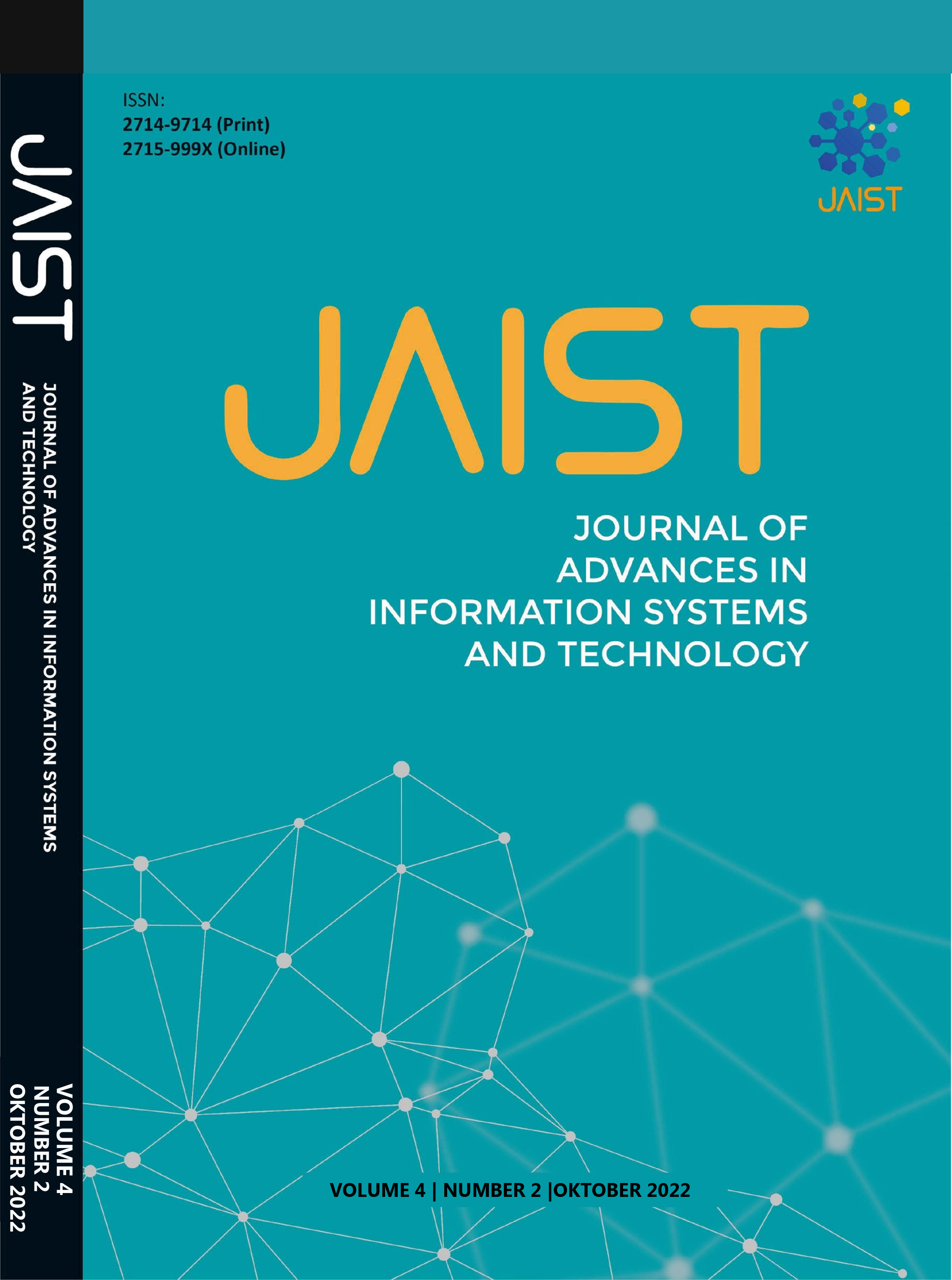Prediction of Life Expectancy of Lung Cancer Patients Post Thoracic Surgery using K-Nearest Neighbors and Bat Algorithm
Abstract
Lung cancer is one of the deadliest cancers, accounting for 11.6% of cancer diagnoses in the world. Death in lung cancer patients can occur in various ways and one of the treatments for lung cancer patients that can be done is thoracic surgery. Thoracic surgery is generally considered a medium risk procedure, but thoracic surgery has a high risk, one of the risks is that if the patient loses blood which will result in the death of the patient. In this study, the method used to implement predictive life expectancy in post-thoracic surgery patients is the bat algorithm for feature selection and the KNN algorithm for classifying data. The dataset used in this study was obtained from the UCI Machine Learning Repository, namely the thoracic surgery dataset which contains 470 data with 16 attributes. The results of the study in predicting the life expectancy of patients after thoracic surgery were carried out with 3 tests. The first test is testing the population with the best accuracy of 87.23%, the second test is convergent testing with the best accuracy of 87.23% and the third test is the comparison test of KNN which produces the best accuracy of 87.23%. The bat algorithm succeeded in increasing the accuracy of the KNN classification by 5.23% from 81.91%.
Copyright (c) 2023 Journal of Advances in Information Systems and Technology

This work is licensed under a Creative Commons Attribution-ShareAlike 4.0 International License.


